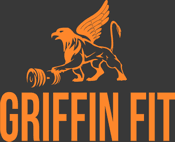Exercise Of The Week – Bench Press
by Tia Dewick in Training

What is the Bench Press?
The bench press is a compound exercise that focuses on the chest, shoulders and triceps. Synergists to support the movement also include the deltoids and biceps. Secondary muscles also include the rhomboids, rotator cuff and serratus anterior. The bench press can also be used to measure strength through your one rep max!
Technique
The bench press can be done with a barbell or with dumbbells. It consists of positioning your feet shoulder width apart and flat on the floor directly below your knees whilst lying down with your back against the bench. Place your hands approximately 3-5 inches wider than shoulder width apart; gripping with the palm of your hands and wrap your fingers and thumbs around the bar creating an O shape to maximise the stability of the grip.
Once in position, remove the barbell from the rack and position it directly above your chest with your arms extended and a slight bend in the elbow to stop the joint from ‘locking out’. Despite rumours that you should ‘lock out’ your elbows during the bench press it can cause multiple joint injuries.
Begin to breathe in as you pull the bar down towards your chest ensuring the elbows are tucked in with approximately 75o between your feet and your elbow. Stop just above your chest and begin to exhale as your push the bar towards the ceiling until the arms are back into the original position.
In order to build muscle aim for 8-12 reps with 3-5 sets! If you can easily produce 12 reps then increase the weight on the barbell!
Variations
- Dumbbells
- Smith machine bench press
- Inclined bench press
- Decline bench press
- Bosu ball press up
- Cable press
- Single arm dumbbell press
- Single arm cable press
Benefits
- The bench press is great for burning bad cholesterol and increase the level of good cholesterol in the body!
- Great for STRESS RELIEF
- Weight training enhances flexibility, bone density and research has shown a positive relationship between weight training and the reduction of potential osteoarthritis development!
- It can reduce the risk of joint injury as there is more strength blocking unwanted movements
- Has been shown to prevent cognitive deterioration with age!
- Improves self-confidence, body image and your MOOD
- Last but not least – increased muscle mass!
Pre-Workout
Try not to consume calories, particularly carbohydrates less than an hour before exercise to optimise the rate of work during the session.
Post Workout
Be sure to consume plenty of carb and protein post-workout to ensure muscle recovery. Research recommends high quality protein (ie chicken) consumption within 5 hours post training and carbohydrates within 2 hours post training for optimal recovery.
Ensure plenty of sleep! Not sure what the optimal level of sleep entails? Look out for our blog on sleep!
Ensure you stretch to speed up recovery!
